Orlando, FL Pollen and Allergy Report for Summer 2023
Pollen Allergy Trends in Orlando, FL
When is pollen lowest in Orlando, FL?

May
Lowest month total PPM
Avg. PPM
When is pollen highest in Orlando, FL?

April
Highest month total PPM
Avg. PPM
How does pollen in Orlando, FL compare to Florida?
Orlando has a lower average PPM than the state of Florida.
Orlando yearly avg PPM:
Florida yearly avg PPM:
How does pollen in Orlando, FL compare to the USA?
Orlando has a higher average PPM than the USA.
Orlando yearly avg PPM:
USA yearly avg PPM:
Is pollen worse this year in Orlando, FL?
Spring 2023 was better than spring 2022.
Spring 2023 PPM:
Spring 2022 PPM:
Average PPM in Orlando, FL
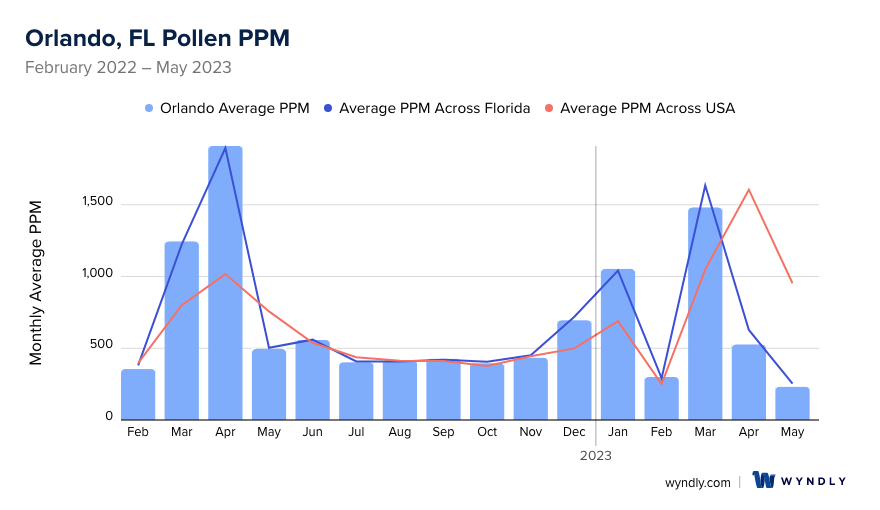
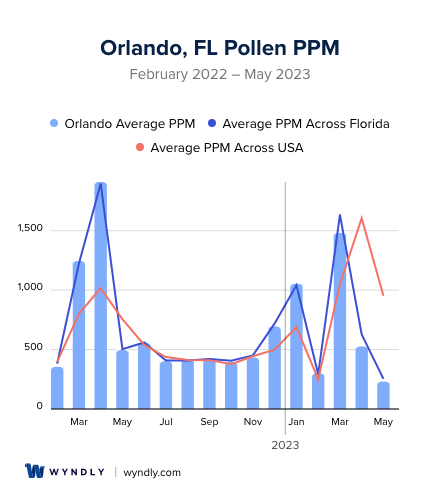
Orlando, FL Pollen and Allergy Breakdown by Month
Grass
When is grass pollen highest in Orlando, FL?
April has the highest grass pollen in Orlando, FL with an average PPM of
When is grass pollen lowest in Orlando, FL?
December has the lowest grass pollen in Orlando, FL with an average PPM of
Tree
When is tree pollen highest in Orlando, FL?
March has the highest tree pollen in Orlando, FL with an average PPM of
When is tree pollen lowest in Orlando, FL?
July has the lowest tree pollen in Orlando, FL with an average PPM of
Weed
When is weed pollen highest in Orlando, FL?
June has the highest weed pollen in Orlando, FL with an average PPM of
When is weed pollen lowest in Orlando, FL?
February has the lowest weed pollen in Orlando, FL with an average PPM of
Orlando, FL Pollen Monthly Breakdown by Pollen Type
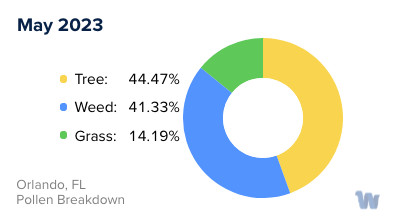
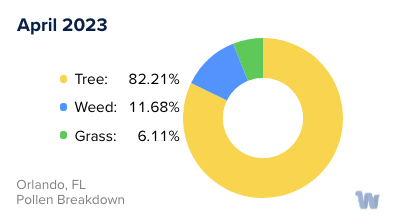
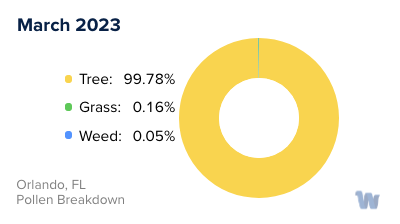
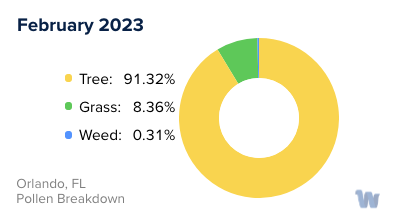
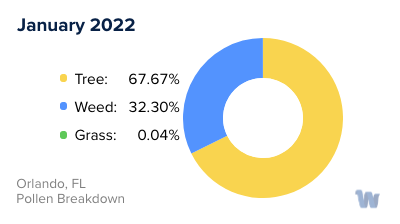
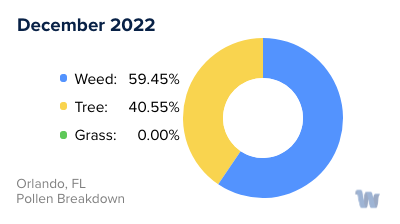
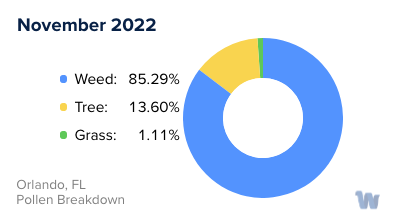
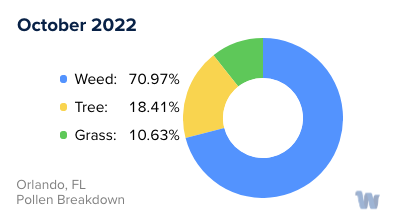
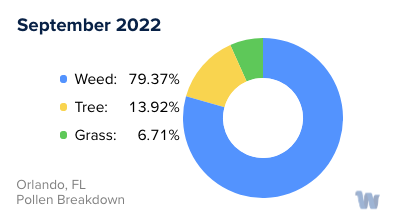
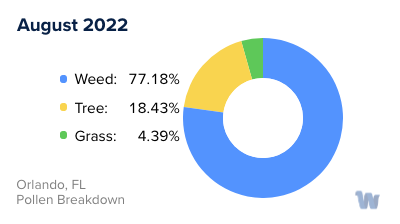
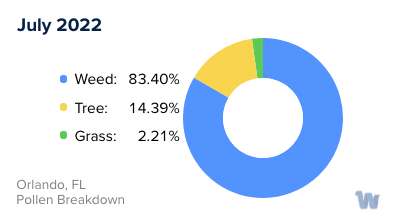
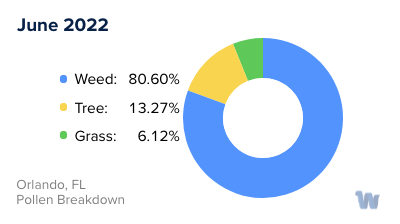
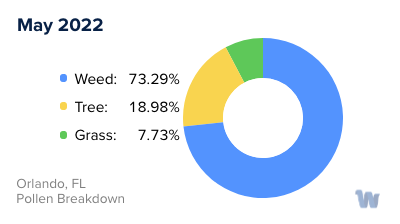
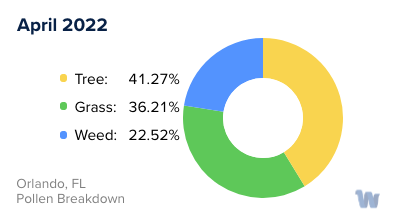
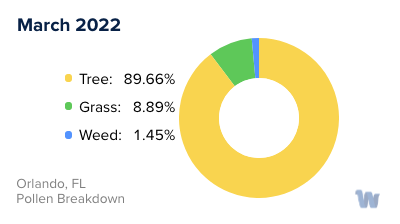
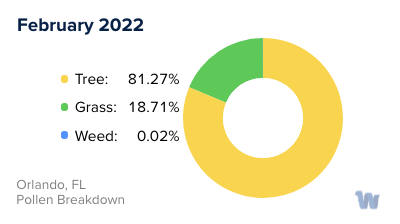
Pollen and Hay Fever in Orlando, FL
Pollen allergies, often referred to as hay fever, are a common concern for many residents and visitors in Orlando, Florida. This condition is primarily triggered by airborne pollen particles from various plants that can cause an overreaction of the immune system in susceptible individuals. The symptoms can vary from mild to severe, encompassing anything from sneezing, runny nose, and itchy eyes, to more intense reactions like difficulty breathing. However, understanding the types of pollen and their seasonal patterns can help people better anticipate and manage these episodes.
In Orlando, there are three main types of pollen that dominate the landscape: tree, grass, and weed pollen. Each type has its specific season, although there's considerable overlap due to Florida's unique climate.
Tree pollen is the first to appear, usually starting in late winter and peaking in the spring. The primary contributors are oak, pine, and cedar trees. Their pollen is light and easily carried by the wind, which can lead to widespread distribution across the city.
Following the tree pollen season, grass pollen takes center stage, typically from late spring through early summer. Bahia and Bermuda grasses are common culprits, flourishing in Orlando's warm climate and sending their pollen far and wide.
Lastly, weed pollen, especially from ragweed, can cause allergic reactions from late summer to the first frost. Despite Florida's tropical climate, ragweed thrives in Orlando and can cause significant discomfort for allergy sufferers.
While Orlando's diverse range of flora makes it a beautiful place to live and visit, it can also be challenging for those with pollen allergies. However, by understanding the types of pollen and their seasons, it's possible to anticipate these allergenic periods and take preventative measures. Remember, knowledge is the first step to living comfortably with pollen allergies.

